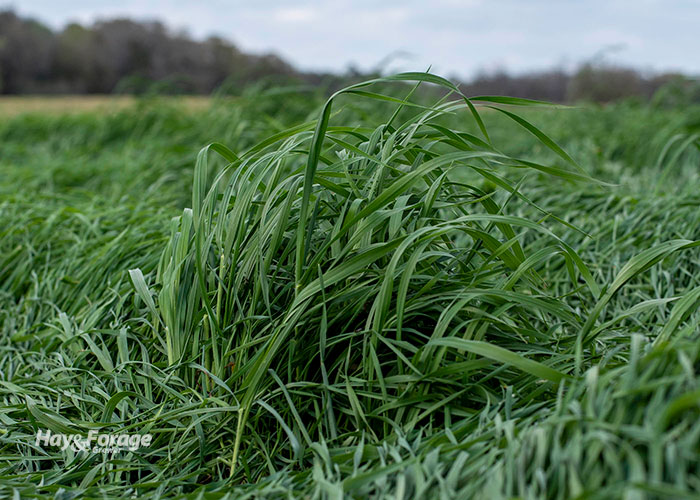Searching for a winterhardy ryegrass |
| By C.J. Weddle |
|
|
 A team of forage specialists and researchers recently evaluated experimental populations of perennial ryegrass alongside many other popular species of grazing forages. Their goal was to identify cultivars with improved winterhardiness. Perennial ryegrass is a favorite among farmers across the U.S., but it lacks the winterhardiness for long-term persistence in the Upper Midwest. The perennial ryegrass breeding program at the University of Minnesota (UMN) identified several experimental populations with improved winterhardiness, but they had not been evaluated under grazing conditions. The research was organized and conducted in St. Paul and Grand Rapids, Minn., over two grazing seasons. Horses were grazed at the St. Paul site, and the pastures at Grand Rapids were grazed by cow-calf pairs. Each location was seeded with meadow fescue, tall fescue, orchardgrass, Remington perennial ryegrass, and two of the experimental perennial ryegrass cultivars. The forages were all evaluated in terms of quality and quantity before the livestock began grazing, and then again afterward to assess animal preference and forage persistence. Yields of all grasses (4.2 to 5.1 tons per acre) were similar during the first year, but perennial ryegrass yield (1.9 to 2.2 tons per acre) was lower compared to the other grasses (≥3.1 tons per acre) in the second year. Perennial ryegrasses were consistently among the highest (on a dry matter basis) for: • Crude protein (≥19%) • Equine digestible energy (≥1 Mcal per pound) • Bovine metabolizable energy (≥1.1 Mcal per pound) • Neutral detergent fiber digestibility (NDFD) at 48 hours (≥85%) Perennial ryegrasses ranked moderately for nonstructural carbohydrates (12% to 16%) and were among the best in neutral detergent fiber (NDF) values at ≤54%. Although consistent trends in forage nutritive value among the other grasses were not easily seen, orchardgrass tended to have lower values than the other forages in the study. • Crude protein (18%) • Nonstructural carbohydrates (10%) • NDFD at 48 hours (≥82%) Both horses and cattle had a high preference for perennial ryegrass and a lower preference for orchardgrass. Livestock preference was negatively correlated with higher NDF content and positively correlated with crude protein and energy parameters. As for the winterhardiness and persistence after two years, all of the grasses performed similarly, although perennial ryegrass had the lowest percent ground cover (40% or below). Minnesota experienced a harsh winter following the second year of the study, over a week of low temperatures between -15 and -44°F. Although there was snow cover to help insulate the ground, the scientists believe the extreme conditions contributed to the poor persistence observed. The researchers concluded that the experimental populations of perennial ryegrass produced high-quality forage that was preferred by grazing livestock; however, yield and stand persistence may be reduced compared to other cool-season grasses.  C.J. Weddle C.J. Weddle is serving as the 2020 Hay & Forage Grower editorial intern. She currently attends Mississippi State University, majoring in agricultural education, leadership, and communications. She grew up on a farm in Vardaman, Miss., where her family raises sweet potatoes and soybeans. |
